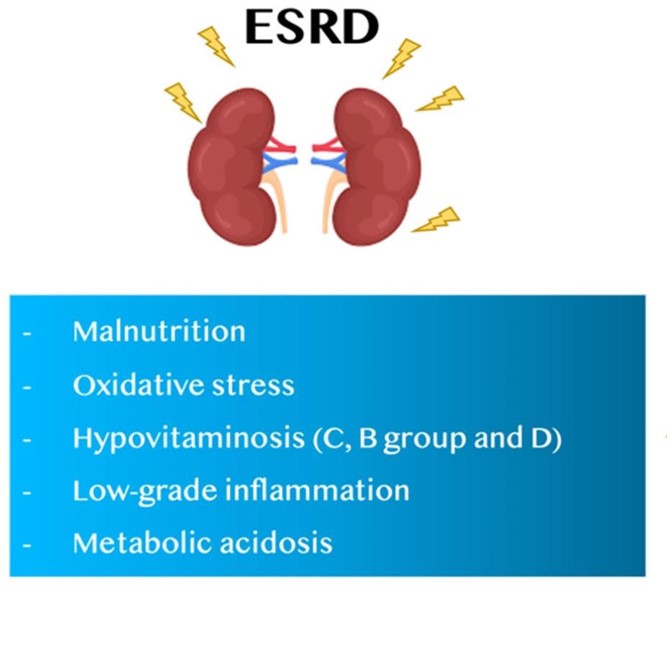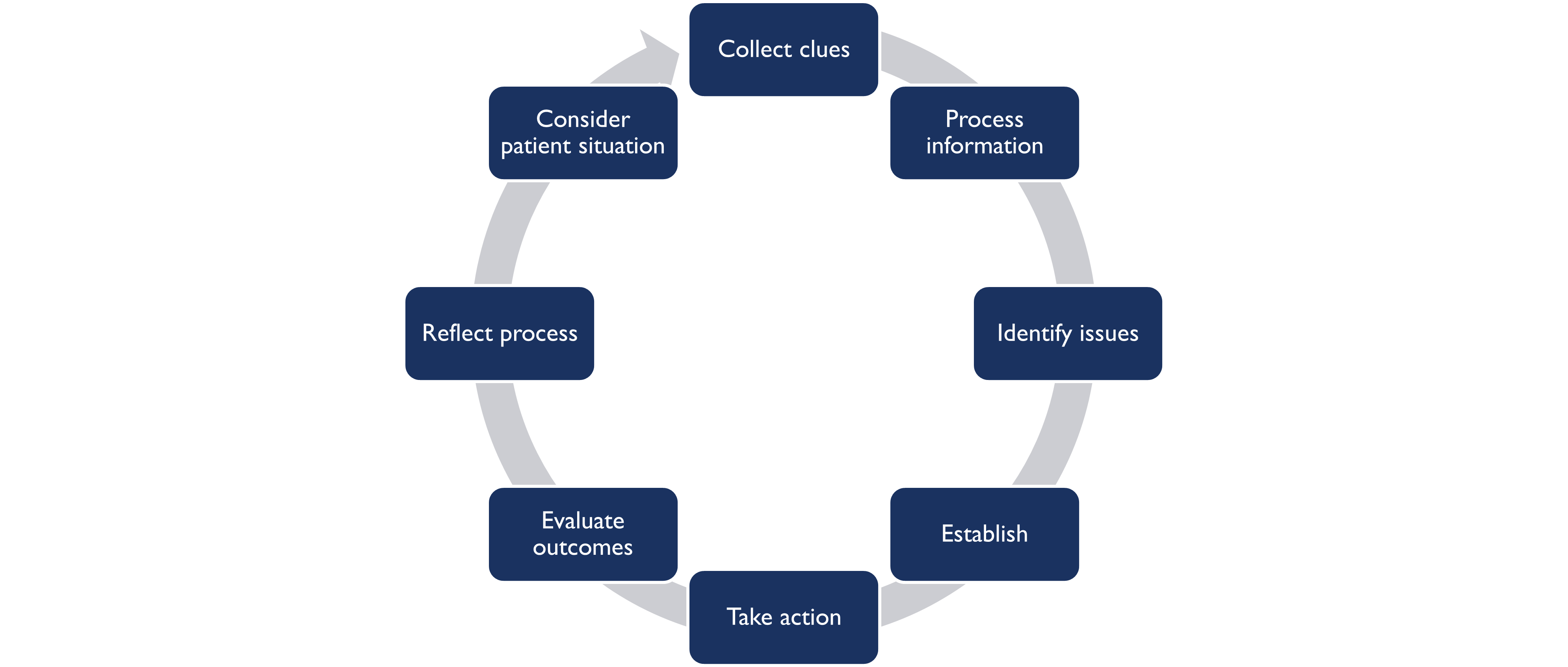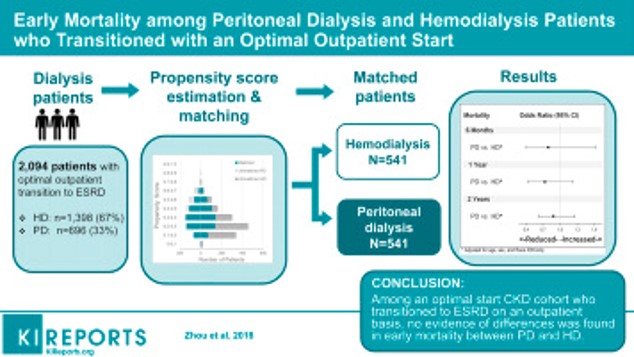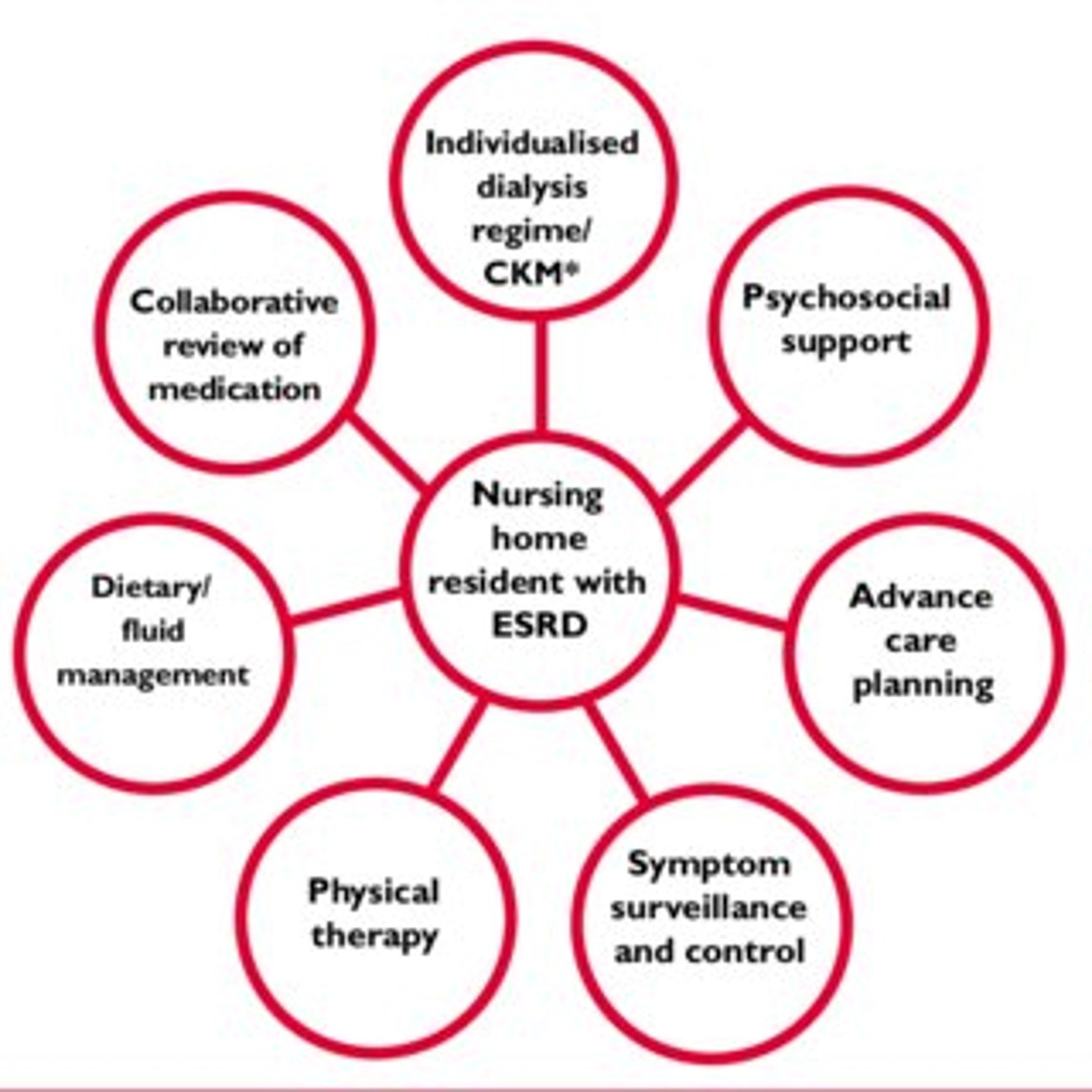$20 Bonus + 25% OFF CLAIM OFFER
Place Your Order With Us Today And Go Stress-Free
This assignment is more focused on ESRD and the details with critical reasoning. End-Stage Renal Disease (ESRD) is a medical disease in which a person's kidneys stop working permanently, necessitating either a kidney transplant or a continuous course of long-term dialysis to sustain life.
In the US, diabetes and high blood pressure are the two main factors of ESRD. Your kidneys may be affected by these diseases. Nearly always, chronic kidney failure is followed by ESRD. Before end-stage disease manifests, the kidneys may gradually cease functioning over a period of 10 to 20 years.
● 59 year old male Patient diagnosed with ESDR
● Detection of infection in catheter exit site
● ESRD stands for End-Stage renal disease
● ESRD can lead to kidney failure (Pei et al., 2019)
● Dialysis or a transplant can treat
● ESRD often experience a wide range of symptoms (Chen et al., 2021)
● There is high risk for developing bone and joint infections (Rysz et al., 2020)
● Beneficiaries' eligibility for Medicare

The acronym “ESRD” stands for “End-Stage renal disease.” This term is used to describe a group of diseases that affect the kidneys. ESRD can be caused by a number of factors, including hypertension, diabetes, and age. If left untreated, ESRD can lead to kidney failure.
In this condition, the kidneys can no longer function properly and must be replaced. Kidney failure is a serious condition that can require Dialysis or a transplant to treat. The End Stage Renal Disease (ESRD) Patient population is composed of individuals who have advanced renal disease and are no longer able to adequately function without dialysis or a transplant.
Those who suffer from ESRD often experience a wide range of symptoms, from mild to debilitating. End-Stage Renal Disease (ESRD) is a medical disease in which a person's kidneys stop working permanently, necessitating either a kidney transplant or a continuous course of long-term dialysis to sustain life.
Beneficiaries' eligibility for Medicare may be determined by their ESRD. When the kidneys fail and the typical symptoms that follow appear, dialysis is typically begun as soon as possible. However, waiting to start dialysis can help prepare for it better if patients do not have any serious symptoms.
As per the case history, 59 year old male patient is diagnosed with ESRD and previously diagnosed for diabetes and hypertension. Diabetes increases the infection easily throughout the body which is occurred in this case. Redness of skin near to catheter exit area represents there is infection on the skin.
Haemodialysis tubes with tunnels are more prone to CRBSIs. Between 40% and 80% of CRBSIs are brought on by gramme-positive bacteria. Coagulase-negative the most prevalent microorganisms are Staphylococci, Staphylococcus aureus, and Enterococcus. Staphylococci resistant to methicillin are common.
The main issue with conventional catheter culture techniques is that they require the removal of the CVC; then, the line tip is either rolled on an agar plate or put in a nutrient broth.

A book written in Australia that focuses on clinical logic as it relates to nursing practice. Clinical Reasoning challenges students to think critically about the nursing care they deliver while guiding them through the clinical reasoning process using a series of real-world situations.
In terms of the case history of ESRD critical justification and analysis is important to solve the complications and improve medical challenges.
• 59-year-old male
• Diabetes, hypertension
• Redness presents on the catheter exit site
• ESRD since 2022, had undergone Peritoneal dialysis.
• Malfunction on PD catheter

Case includes two major comorbid situations of 59-year-old male patient which are diabetes and hypertension. Both are responsible to cause different malfunctions easily.
Moreover, redness in skin occurred and suggests the effective infection. Peritoneal dialysis is a kidney failure therapy that filters your blood inside of patient’s body using the lining of the abdomen.
This covering is known by the medical community as the peritoneum. A few weeks prior to beginning peritoneal dialysis, a physician inserts a soft tube into abdomen known as a catheter.
Although catheter-related infections are the most prevalent peritoneal dialysis (PD) complications, catheter malfunction is a well-known relatively common complication. Catheter obstruction or catheter tip migration in the abdominal cavity are the two main causes of catheter failure.
Also Read - Clinical Reasoning Cycle Assignment Help

The most important of them in the treatment of end-stage renal disease (ESRD) patients are hemodialysis (HD), peritoneal dialysis (PD) and renal transplantation (RT).
One of the most common complications associated with end-stage renal disease (ESRD) is blood clots. While there is no one definitive treatment for blood clots, there are a number of possible treatments that may help to prevent or reduce the risk of blood clots (Chinnadurai et al., 2019).
Haemodialysis is a process that helps reduce the amount of waste products in the blood. This Waste Removal Process occurs when the blood is passed through a machine that removes the waste products.
Haemodialysis is used to treat people with kidney failure. Peritoneal dialysis is a type of haemodialysis that helps clean the blood of waste products and toxins while it flows through the patient's dialysis machine (Kassa et al., 2020).
Renal transplantation is a very successful treatment for end-stage renal disease (ESRD). The transplant can improve the quality of life for patients by providing them with a clean and healthy kidney, and by reducing the need for dialysis.
Also Read - Clinical Nursing Assignment Help
● High morbidity and death rate due to infections (Lamarche et al., 2019)
● High risk for infection through catheters or needles into the bloodstream (Heron et al., 2020)

Dialysis patients are at risk for developing infections due to a number of factors. Dialysis can remove up to 90% of the blood in a patient's body, which can lead to an increase in the number of germs in the patient's blood.
Dialysis also removes waste products from the blood, which can create an environment that is conducive to the growth of bacteria and other infections. Vascular access infections constitute the bulk of septicaemia cases, which are the most common cause of infection-related mortality in dialysis patients.
Patients with end-stage renal disease (ESRD) experience a high morbidity and death rate due to infections. The creation of focused treatment plans with the goal of reducing overall disease may ultimately result from a better comprehension of the interactions among infectious processes and ESRD.
Doctor and nursing staff need to plan to improve ESRD condition through proper medication. Implementation of antibiotics and other medicine can reduce the spread of infection and reduce the redness issues. Moreover, sanitization and cleanliness will help patient to recover faster which is continuing form 2022.
● Oral paracetamol
● IV antibiotics
● Haemodialysis
● Sodium restriction and volume control (Méndez Barbecho et al., 2020)
● Palliative and conservative care management (Hu et al., 2022)

Monitoring and controlling fluid and electrolyte imbalances, improving nutrition, and ensuring medication safety are some of the specific treatments. In addition, nurses help patients with their mental health and educate them on how to take care of themselves and avoid further kidney damage.
Mortality is increased in dialysis patients whose blood pressure is managed. Sodium restriction and volume control through adequate dialysis can help these people receive hypertension treatment at its best.
For patients with ESRD and diabetes mellitus who need medication, insulin is the favoured option. Given improved long-term outcomes, kidney transplantation is the preferred course of treatment for ESRD. Information on palliative and conservative care management should be given to patients who do not want renal replacement treatment.
Also Read - Nursing Assignment Help
Approximately 70% of initial IV antibiotic doses are vancomycin, making it the most commonly used IV antibiotic in the dialysis environment. Up to 30% of IV doses given to patients receiving maintenance haemodialysis, according to some research, were ineffective or unnecessary.
Although paracetamol is usually the safest pain reliever for patients with kidney disease, it should still only be used under a doctor's supervision. Liver failure can result from using acetaminophen excessively.
Pathophysiological and pharmacological trends of renal disorders
Examine the diabetic foot's persistent infection
Infection control management program

I need to focus more on the pathophysiological and pharmacological trends of renal disorders and problems. I should conduct a more thorough assessment of the patient's condition to examine the diabetic foot's persistent infection.
To manage various ESRD situations in line with renal nursing, I need to increase my understanding of infection control management programs. I believe the best course of treatment for the patient is to administer IV fluids, Metformin, lactate measurements, and antibiotics.
Finally, it can be said that ESRD is one of the critical conditions which requires quality check. Infection might occur from catheter and needles which may act as accelerator to spread of infectious. Patients with end-stage renal disease (ESRD) can receive peritoneal dialysis, which utilises peritoneal fluid.
Chen, P., Hu, R., Gao, L., Wu, B., Peng, M., Jiang, Q., ... & Xu, H. (2021). Abnormal degree centrality in end-stage renal disease (ESRD) patients with cognitive impairment: a resting-state functional MRI study. Brain Imaging and Behavior, 15, 1170-1180. https://link.springer.com/article/10.1007/s11682-020-00317-3
Chinnadurai, R., Macdougall, I. C., & Kalra, P. A. (2019). Treatment of anaemia in end-stage renal disease: A double-edged iron sword?. EBioMedicine, 40, 31-32. https://www.thelancet.com/article/S2352-3964(19)30005-2/abstract
Heron, J. E., Bagnis, C. I., & Gracey, D. M. (2020). Contemporary issues and new challenges in chronic kidney disease amongst people living with HIV. AIDS research and therapy, 17(1), 1-13. https://aidsrestherapy.biomedcentral.com/articles/10.1186/s12981-020-00266-3
Hu, L., Ma, Y., Wang, L., & Dai, Y. (2022). Analysis of Nursing Effect of Comprehensive Nursing Intervention on Hemodialysis Patients with Uremia. Contrast Media & Molecular Imaging, 2022. https://www.hindawi.com/journals/cmmi/2022/5820707/
Kassa, D. A., Mekonnen, S., Kebede, A., & Haile, T. G. (2020). Cost of hemodialysis treatment and associated factors among end-stage renal disease patients at the tertiary hospitals of Addis Ababa City and Amhara Region, Ethiopia. ClinicoEconomics and Outcomes Research, 399-409. https://www.tandfonline.com/doi/abs/10.2147/CEOR.S256947
Lamarche, C., Iliuta, I. A., & Kitzler, T. (2019). Infectious disease risk in dialysis patients: a transdisciplinary approach. Canadian Journal of Kidney Health and Disease, 6, 2054358119839080. https://journals.sagepub.com/doi/pdf/10.1177/2054358119839080
Méndez Barbecho, N., Rodríguez Campo, V., Orellana Yáñez, A., & Valenzuela Suazo, S. (2020). Nursing intervention in health promotion for people on hemodialysis, disciplinary perspective: Integrative review. Enfermería: Cuidados Humanizados, 9(1), 54-64. http://www.scielo.edu.uy/scielo.php?pid=S2393-66062020000100054&script=sci_arttext&tlng=en
Pei, M., Aguiar, R., Pagels, A. A., Heimbürger, O., Stenvinkel, P., Bárány, P., ... & Qureshi, A. R. (2019). Health-related quality of life as predictor of mortality in end-stage renal disease patients: an observational study. BMC nephrology, 20(1), 1-10. https://bmcnephrol.biomedcentral.com/articles/10.1186/s12882-019-1318-x
Rysz, J., Franczyk, B., Ławiński, J., & Gluba-Brzózka, A. (2020). Oxidative stress in ESRD patients on dialysis and the risk of cardiovascular diseases. Antioxidants, 9(11), 1079. https://www.mdpi.com/879000
Takemoto, Y., & Naganuma, T. (2019). Economic issues of chronic kidney disease and end-stage renal disease. In CKD-Associated Complications: Progress in the Last Half Century (Vol. 198, pp. 87-93). Karger Publishers. https://www.karger.com/Article/Abstract/496533
Are you confident that you will achieve the grade? Our best Expert will help you improve your grade
Order Now










